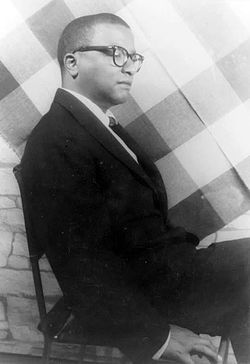| Jazz by decade |
|---|


By the end of the 1940s, the nervous energy and tension of bebop was replaced with a tendency towards calm and smoothness, with the sounds of cool jazz, which favoured long, linear melodic lines. It emerged in New York City, as a result of the mixture of the styles of predominantly white swing jazz musicians and predominantly black bebop musicians, and it dominated jazz in the first half of the 1950s. The starting point were a series of singles on Capitol Records in 1949 and 1950 of a nonet led by trumpeter Miles Davis, collected and released first on a ten-inch and later a twelve-inch as the Birth of the Cool . Cool jazz recordings by Chet Baker, Dave Brubeck, Bill Evans, Gil Evans, Stan Getz and the Modern Jazz Quartet usually have a "lighter" sound which avoided the aggressive tempos and harmonic abstraction of bebop. Cool jazz later became strongly identified with the West Coast jazz scene, but also had a particular resonance in Europe, especially Scandinavia, with emergence of such major figures as baritone saxophonist Lars Gullin and pianist Bengt Hallberg. The theoretical underpinnings of cool jazz were set out by the blind Chicago pianist Lennie Tristano, and its influence stretches into such later developments as Bossa nova, modal jazz, and even free jazz. See also the list of cool jazz and West Coast musicians for further detail.
Contents
- 1950s jazz standards
- 1950–1954
- 1955–1959
- 1950
- Album releases
- Deaths
- 1951
- Album releases 2
- 1952
- Album releases 3
- Deaths 2
- 1953
- Album releases 4
- Deaths 3
- 1954
- Album releases 5
- Births
- 1955
- Album releases 6
- Deaths 4
- 1956
- Album releases 7
- Deaths 5
- Births 2
- 1957
- Album releases 8
- Deaths 6
- Births 3
- 1958
- Album releases 9
- Deaths 7
- Births 4
- 1959
- Events
- Album releases 10
- Deaths 8
- Births 5
- Awards
- References
- Bibliography
Hard bop, an extension of bebop (or "bop") music that incorporates influences from rhythm and blues, gospel music, and blues, especially in the saxophone and piano playing, developed in the mid-1950s, partly in response to the vogue for cool jazz in the early 1950s. The hard bop style coalesced in 1953 and 1954, paralleling the rise of rhythm and blues. Miles Davis' performance of "Walkin'" the title track of his album of the same year, at the first Newport Jazz Festival in 1954, announced the style to the jazz world. The quintet Art Blakey and the Jazz Messengers, fronted by Blakey and featuring pianist Horace Silver and trumpeter Clifford Brown, were leaders in the hard bop movement along with Davis. (See also List of Hard bop musicians)
Modal jazz recordings, such as Miles Davis's Kind of Blue , became popular in the late 1950s. Popular modal standards include Davis's "All Blues" and "So What" (both 1959), John Coltrane's "Impressions" (1963) and Herbie Hancock's "Maiden Voyage" (1965). Later, Davis's "second great quintet", which included saxophonist Wayne Shorter and pianist Herbie Hancock, recorded a series of highly acclaimed albums in the mid-to-late 1960s. Standards from these sessions include Shorter's "Footprints" (1966) and Eddie Harris's "Freedom Jazz Dance" (1966).
In Brazil, a new style of music called bossa nova evolved in the late 1950s. The free jazz movement, coming to prominence in the late 1950s, spawned very few standards. Free jazz's unorthodox structures and performance techniques are not as amenable to transcription as other jazz styles. However, "Lonely Woman" (1959) a blues by saxophonist Ornette Coleman, is perhaps the closest thing to a standard in free jazz, having been recorded by dozens of notable performers. [1]

